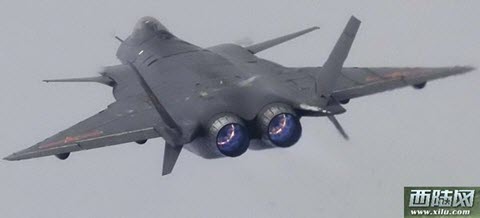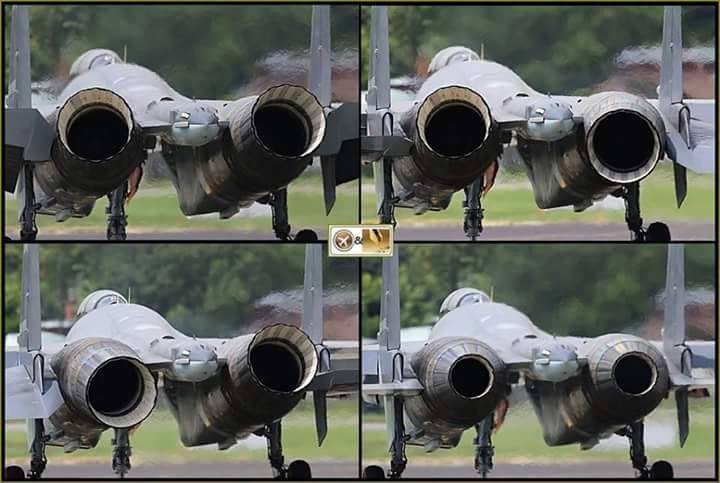The F-22 has square nozzles, while the Russian Sukhoi PAK FA has circular nozzles.
There are both 5th generation planes, but with different nozzles, why?
The F-22 has square nozzles, while the Russian Sukhoi PAK FA has circular nozzles.
There are both 5th generation planes, but with different nozzles, why?
Circular nozzles have these advantages:
Actually, square thrust vectoring nozzles have just one advantage: They can be made to reflect radar waves in a few well-defined directions, while round nozzles will scatter them all around. This makes square nozzles the preferred choice for stealth aircraft, regardless of thrust vectoring.

Engine nozzles of the F-22 (picture source). Note the serrated rear edges of the thrust vectoring panels.

Engine exhausts of the B-2. Since the B-2 uses four non-afterburing engines, fixed nozzles are used. Their location helps to protect the airplane from detection by infrared (IR) sensors, but makes thrust vectoring impracticable.

Engine nozzles of the YF-23 (picture source). The lower part is longer to shield the hot exhaust against IR sensors from below.
If the goal is to mostly reduce radar reflections in the forward hemisphere of the aircraft, round nozzles can be tolerated. Only when the aircraft needs to be protected from radar-guided missiles fired from behind will the square nozzles give a clear advantage. It seems that the people behind the Sukhoi PAK FA (and other stealth fighters like the Chinese J-20) do not worry so much about this detail.

Sukhoi T-50 (prototype for the PAK FA program) from below (picture by Dmitry Pichugin)

Chengdu J-20 rear view (picture source)
However, even Lockheed-Martin and Pratt & Whitney now place maneuverability and weight over stealth in their nozzle design for the F-135 engine of the F-35 strike aircraft. Note the serrated edges on all contour steps. This helps to reduce radar returns, but is much less effective than a square nozzle. The benefit is less weight and better maneuverability.

F-35 with the F-135 nozzle visible (Picture source).
The type of nozzle used in the aircraft depends on the design decisions taken. In short, the designers of F-22 chose stealth over manuverability, while the Sukhoi PAK FA designers went the other way around.
Circular thrust vectoring nozzles have been used in Sukoi aircraft for quite some time. The main advantages and disadvantages of the two types of thrust vectoring nozzles are:

Source: defencyclopedia.files.wordpress.com
Another point is that the PAK FA uses a variant of the engine used in Su-30, the AL-41F1. A new engine is still under development. So the final configuration can very well be different, though I doubt it as Russians seem to value maneuverability above stealth.
The main disadvantage of using a axisymmetric nozzle is that it is inherently unstealthy. As far as stealth goes, the circular (or spherical) section is one of the worst design choices. The F-22's nozzle design is optimized for stealth, especially the edges of the thrust vectoring nozzles are carefully aligned to prevent radar reflection. This is clearly visible in the planform views of the two aircraft.

Source: http://manglermuldoon.blogspot.in
 Rear view of a standard P&W F-100-200 in F-16 and the LOAN nozzle in the foreground (LMTAS photo), Source: F-16.net
Rear view of a standard P&W F-100-200 in F-16 and the LOAN nozzle in the foreground (LMTAS photo), Source: F-16.net
However, according to ausairpower.net analysis of J-20 which uses an engine similar to PAK-FA,
The tail aspect sector is largely degraded in RCS performance by the use of axi-symmetric nozzles which introduce strong specular and diffraction returns

Source: http://defence.pk